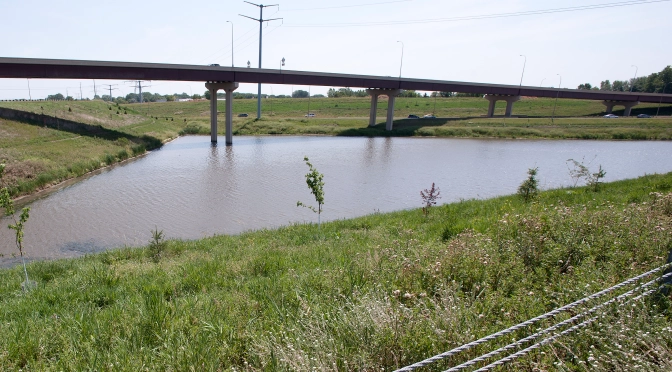Two county roads provided a testing ground for three combinations of aggregate bases and asphalt binders. Results from more than two decades of research and monitoring of pavement test sections validated previous conclusions. A larger gradation aggregate base showed superior performance over the pavement life cycle when compared with the standard aggregate base. Additionally, sections constructed without transverse joints to allow natural thermal cracking outperformed sections with sawn and sealed joints.
Continue reading Finding High-Performing Aggregate Bases for Long-Lasting PavementTag Archives: MnDOT
Effectively Alerting the Public About Local Road Closures
Navigation apps can be valuable timesavers for drivers in Minnesota. To maximize their use, these apps need traffic information that is timely and accurate. While state highway closures are reported effectively, reporting road closures on local roads and highways is inconsistent. This project aimed to improve local road closure reporting by exploring the development of a streamlined reporting system and creating guidance for reporting local road closures to third-party navigation apps.
Continue reading Effectively Alerting the Public About Local Road ClosuresManaging Stormwater in a Changing Climate Will Require Updates to Minnesota’s Infrastructure
Reprinted from CTS News, March 21, 2024
—Sophie Koch, contributing writer
Changing precipitation patterns caused by the onset of climate change mean that Minnesota’s stormwater management systems—the ponds, pipes, and other structures meant to control runoff in the event of a heavy rainstorm—are going to need an upgrade.
The Minnesota Department of Transportation, which manages a significant portion of Minnesota’s stormwater infrastructure, has noted that its current systems are based on pre-climate-change data. Because climate change is broadly linked to increases in extreme rain events, MnDOT sponsored a U of M study to analyze whether Minnesota’s current infrastructure is prepared for predicted changes in precipitation patterns.

Swales in the right-of-way can infiltrate stormwater runoff from roads.
“The traditional hydrologic design method of using past observed data must evolve to incorporate precipitation predictions,” says Erik Brenna, assistant state hydraulics engineer at the MnDOT Bridge Office. “We have an ethical obligation to use the best available data to provide designs benefitting the health, safety, and welfare of the traveling public.”
The first section of the study—which ran predictive models on watersheds in Duluth, Rochester, and Minneapolis—determined that precipitation volumes are likely to rise in Minnesota, and the current stormwater designs will be insufficient to control flooding.
“Designing for future potential rainfall events requires more substantial investment in stormwater control infrastructure,” says John Gulliver, a professor in the Department of Civil, Environmental, and Geo- Engineering.
With the aim of guiding these investments, the researchers analyzed potential stormwater control strategies for both performance (ability to reduce flood depth and duration) and cost. This list includes:
- Adding infiltration basins (such as rain gardens).
- Retrofitting existing ponds into “smart” ponds (which use a digital system to automatically drain water levels in response to upcoming weather events).
- Adding new stormwater ponds (both normal and smart).
- Enlarging stormwater pipes to convey more water.
Infiltration basins proved good at handling the more common, low-volume rain events that the models predicted. However, higher-volume “100-year storms” need more capacity. For this, the researchers recommend adding new ponds, since this strategy threads the needle between performance and cost.

Rain gardens, or infiltration basins, can be included in new and existing development. Planted with deep-rooted vegetation, these areas can accommodate a significant amount of rainfall.
Converting normal ponds into smart ponds, by contrast, was cheaper but less effective, and enlarging stormwater pipes tended to simply move flood problems downstream rather than solving them.
The main drawback to adding ponds, Gulliver says, is that ponds require a lot of land, which might be particularly difficult and costly to access in highly developed areas like Minneapolis.
However, the researchers point out that doing nothing might be even more costly in the long run, citing the 2012 storm in Duluth that caused over $100 million in damage, $20 million of which was to MnDOT infrastructure.
“While preventing all damage from extreme events may be infeasible, minimizing impacts through cost-effective adaptation strategies can save millions of dollars,” Gulliver says.
Read Also:
Measuring the Livability Framework
MnDOT’s Office of Livability developed the Livability Framework to help guide planning, programming, and project development processes. It is being piloted in MnDOT Metro District. The outcomes should result in more people focused outcomes for the plans, programs and projects in the District. The Livability Initiative wants each of the Livability Pillars of the Livability Framework to be thoroughly considered and evaluated when planners, project managers, and others make decisions about transportation policies, programs, and/or projects.
Continue reading Measuring the Livability FrameworkStormwater Research Sees Practical Application in Twin Cities Metro, St. Cloud
Sophie Koch, CTS News, February 22, 2024
A long-running series of U of M research projects aimed at improving stormwater quality are beginning to see practical application by stormwater specialists from the Twin Cities metro area and beyond.
Continue reading Stormwater Research Sees Practical Application in Twin Cities Metro, St. CloudResearchers identify Minnesota’s best charging locations for e-trucks, aiming to boost adoption
By Megan Tsai, reprinted from CTS News, February 8, 2024
Aiming to eliminate barriers to electric truck adoption in Minnesota, U researchers have identified the state’s most suitable e-truck charging locations.
Currently, the adoption of electric medium- and heavy-duty trucks is lagging compared with the rising popularity of personal and transit electric vehicles. There are several reasons behind the delay, but one key factor is the lack of an adequate charging station network for e-trucks. The Minnesota Department of Transportation (MnDOT) called on U of M researchers for insight and guidance.
“Our goal was to understand the needs and opportunities for e-truck charging stations and to optimize the location of charging stations in Minnesota, ” says Alireza Khani, associate professor with the Department of Civil, Environmental and Geo-Engineering and the project’s principal investigator.
The project was conducted in two stages. In the first stage, researchers identified the most important criteria to consider when planning e-truck charging stations; this was done with a survey of experts and stakeholders, including staff from MnDOT, the Freight Mobility Research Institute, and the American Trucking Associations.
Based on this survey, researchers ranked the relative importance of the criteria and assigned each a weighted value. The top three criteria were ease of access for e-truck drivers, proximity to power substations, and proximity to existing truck stops. Other criteria included environmental conditions (land cover, water resources, and flood risk), land prices, and the potential to generate onsite solar energy.
During the second stage, researchers developed geographic information system layers for each criterion and pared down candidate locations using optimization modeling. The model was designed to consider truck demand in Minnesota, the routing and charging activities of e-trucks, and the market penetration rate of e-trucks, with a goal of minimizing total travel costs to promote greater adoption of e-trucks.

“This optimization model is a novel decision-making tool that will help MnDOT maximize its return on investment in the charging station network,” Khani says. “The model can be expanded to incorporate other contributing factors and inform policy decisions.”
To gain additional insight into Minnesota e-truck adoption, researchers tested the model with several assumptions based on the reduced per-mile operating costs of e-trucks over diesel trucks. They found that the adoption of e-trucks would grow sharply as the charging station network is developed; the growth rate would be highest when the first 30 to 40 stations are added. The modeling also found that solar generation was not a viable option to fully power truck charging stations.
MnDOT is focused on meeting the state’s greenhouse gas reduction goals, and increasing the adoption of e-trucks would help MnDOT proactively address this significant subsector of transportation greenhouse gas emissions.
“This project helped us understand considerations for e-truck charging stations, such as electric power substation location and capacity,” says Andrew Andrusko, freight planning director with MnDOT’s Office of Freight and Commercial Vehicle Operations. “It also identified optimal locations for truck charging stations to support intrastate freight movement.”
A Mobile App to Report Driver Intrusions Into Work Zones
Transportation workers face critical safety risks when drivers fail to comply with traffic control instructions in work zones. These intrusions threaten not only the flaggers who are directing traffic, but all workers on the job site and the drivers themselves. Knowing the nature and frequency of intrusions is necessary to develop effective prevention strategies. A new mobile phone app enables workers to quickly and easily report incidents, allowing MnDOT to analyze risks and improve worker safety.
Continue reading A Mobile App to Report Driver Intrusions Into Work ZonesSkid-resistant pavement markings could help stop slips
Reprinted from Catalyst, January 23, 2024
Retroreflective pavement markings such as bike lane indicators, crosswalks, and lane lines are designed to increase safety. However, the same retroreflective properties that add nighttime visibility can also make them slippery for vulnerable road users such as pedestrians, bicyclists, and motorcyclists—especially in wet or icy conditions.
Continue reading Skid-resistant pavement markings could help stop slipsSafety measures, service improvements key to increasing post-pandemic transit use in Greater Minnesota
Originally published in Catalyst, January 16, 2024
The COVID-19 pandemic took a major toll on public transit and shared transportation services in Minnesota, causing ridership and revenues to plummet. And it wasn’t just an urban problem: Smaller rural agencies and services saw sharp declines, too.
Continue reading Safety measures, service improvements key to increasing post-pandemic transit use in Greater MinnesotaNew Project: Develop Element Level Bridge Performance Measures and Targets
Currently, federal bridge performance measures in the United States and measures most commonly used by state transportation agencies for bridge management are based on National Bridge Inventory (NBI) General Condition Ratings that reflect bridge component conditions (deck, superstructure and substructure).
MnDOT also collects bridge element data that provides a more granular, objective and quantitative assessment of condition, and would like to have performance measures and targets based on the bridge element data that guides a data-driven methodology to select cost-effective treatments.
Continue reading New Project: Develop Element Level Bridge Performance Measures and Targets








